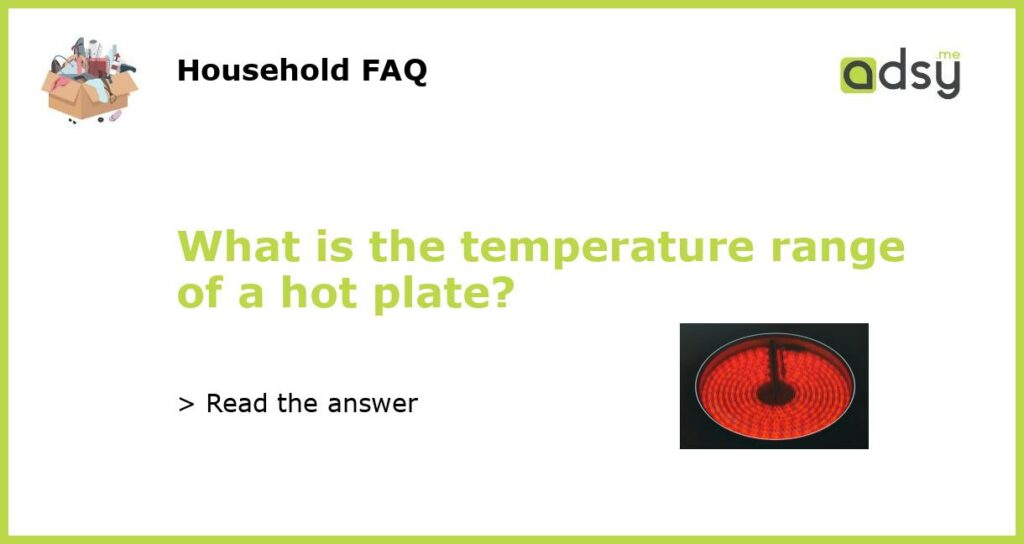The Basics of Hot Plates
A hot plate is an electric appliance used for heating substances to various temperatures. It is made of a series of heating elements that heat up a metal plate, which then heats the substance resting on it. Hot plates are often used in scientific laboratories, classrooms, and in the kitchen to cook food. But what is the temperature range of a hot plate?
Temperature Range of Hot Plates
The possible temperature range of a hot plate depends on the specific model of the hot plate. Some hot plates are designed for use in low-heat applications and have a temperature range of around 100-150 degrees Celsius. These hot plates are often used in scientific experiments that require temperatures that are not too high. Other hot plates, especially those designed for high-temperature applications, can reach temperatures of up to 450 degrees Celsius or more.
Factors that Affect Temperature Range
The temperature range of a hot plate is affected by several factors. One of the main factors is the type of heating element used in the hot plate. Some heating elements are designed to produce high temperatures, while others are meant for low-temperature use. The size of the hot plate also plays a role in determining the temperature range. Larger hot plates may require more heating elements to achieve temperatures that smaller ones can achieve with fewer elements.
Uses of Hot Plates
Hot plates are versatile appliances that have a wide range of uses. In scientific laboratories, hot plates are often used to heat substances for experiments or to prepare samples. In the kitchen, hot plates are used for cooking or keeping food warm. They can also be used to sterilize equipment, melt wax or other substances, and to conduct chemical reactions.
Safety Considerations
When using a hot plate, safety should always be a top concern. Hot plates can cause serious burns if they are not handled properly. Always make sure to use gloves or tongs when handling hot plates or substances that are hot from the hot plate. Also, make sure to keep the hot plate away from flammable substances and materials that can melt. Finally, never leave a hot plate on unattended, and always follow the manufacturer’s instructions for use and maintenance.






